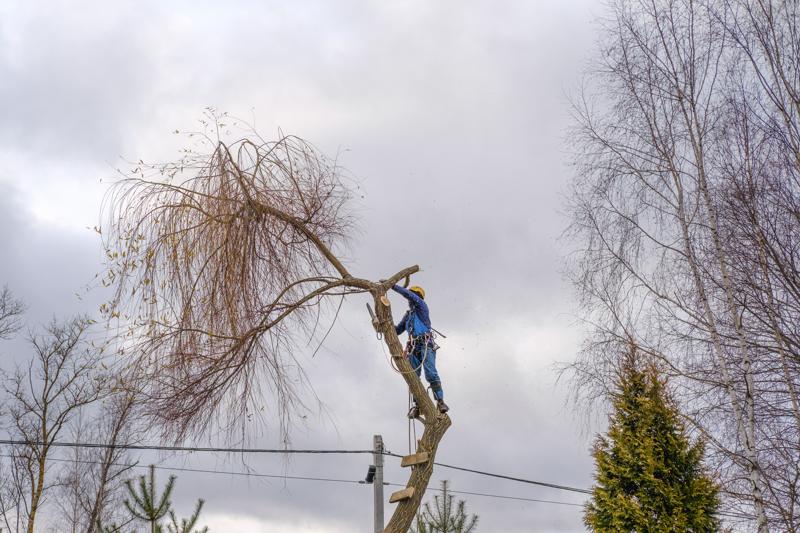An Arborist's Manual to Tree Removal

Tree removal is a complex and possibly dangerous job. If a tree is dying, diseased, or in danger to fall, the tree may require removal to prevent damage to the property and to make sure that the tree is safe. How do you know when a tree must be removed? In this article, we’ll walk you through the signs to be looking for and help you determine whether it’s time to call the professionals.
Dead or dying trees
One of the obvious signs that a tree needs to be removed is when it is dying or dead. Dead trees are without leaves and could have a lifeless appearance. If a tree is without leaves or any signs of growth, it’s probably dead. Additionally, the bark of a dead tree may be dry, cracked or peeling.
Trees that are diseased
Trees with diseases may pose a threat to other trees and plants in the area. The signs of disease that are common on trees are yellowing leaves, wilted branches, and the growth of mushrooms at the root or the trunk. If you suspect your tree may be diseased, it’s important to have it examined by an arborist who is a professional.
Leaning Trees
Trees that are leaning to one side can be an indication that the root system is failing, and the tree could be at risk of falling. To find out if a tree that is leaning could be a threat, check for cracks or broken areas in the trunk and examine the soil around the base of the tree. If you see any of these indicators it is recommended to get the tree examined by an arborist.
Overhanging Branches
The branches of overhanging trees which are located close to power lines or structures can be a danger to property and safety. If you have concerns regarding branches that hang overhanging you should have the tree evaluated by an arborist who can determine whether removal or pruning is required.
FAQs
How do I know if a tree is dead?
An individual tree can be said to be dead if it lacks leaves and has no indication of new growth. Additionally, the bark of a dead tree can be dry, cracked or peeling.
What are the warning signs of a tree that is diseased?
Common signs of disease on trees include dying leaves, wilted or yellowed branches, and mushrooms growing at the base of the tree.
Can you safely remove a tree yourself?
Tree removal can be a complicated and possibly dangerous job. It is best to leave the task to experts who can protect you and others.
Conclusion
When you’re dealing with tree removal, you need to be able to identify the signs that a tree requires to be cut down. By being aware of the indicators of dying or dead trees, diseased trees leaning trees, and overhanging branches and overhanging branches, you can take the necessary steps to ensure the safety of your property and the people around you. If you suspect that the tree that is on your property requires removal and you are unsure, reach out to Sydney Wide Tree Removal for a professional evaluation. Our arborists are highly skilled and have the experience and equipment to handle all the tree removal requirements. Don’t risk your safety. If you suspect that the tree that is on your property must be removed, contact Sydney Wide Tree Removal today for a professional evaluation. Our expert arborists will provide you with peace of mind which comes from knowing that your property is in good with us. Contact us today by dialing 1300 152 268 to schedule an appointment.





















